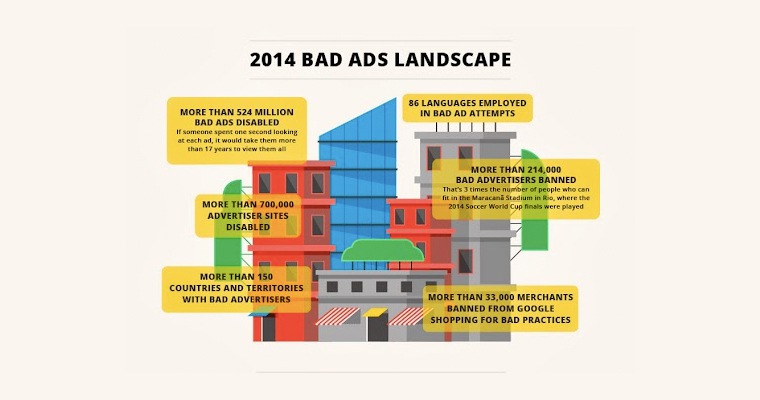Google released its annual “Bad Ads” report today, which revealed the search giant had to disable more than 524 million bad ads last year.
The number of ads Google has to disable each year is rising, as this year’s total is up from 2013’s total of 350 million ads. In addition, Google banned 214,000 advertisers for advertising policy violations.
The most problematic of ad policy violations in 2014 were ads employing “trick to click” methods. These types of ads mislead users into clicking on ads disguised as something else, like a system error. Over 43 million ‘trick to click’ ads were disabled last year.
There were a significant number of ads disabled for health-care related violations, such as the promotion of illegal online pharmacies. Over 9.6 million ads were disabled for such violations.
Those advertising counterfeit goods were a target for Google again this year, with 7000 advertisers banned for promoting counterfeit goods, which is down 14,000 last year. Google believes its advanced enforcement systems are preventing more and more of these types of advertisers from getting into AdWords.
Other bad advertising practices Google fought against last year were ads directing users to malicious software, and ads promoting weight loss scams.
Google uses a combination of automated system and analysts’ reviews to identify bad ads. Publishers, authorities, and other advertisers also have assisted Google with identifying ads that violate Google’s advertising policies.
In total, 700,000 sites across 150 countries and territories were banned last year. While that may sound like an alarming amount of ads in violation of Google’s bad advertising practices, the company says it’s just a fraction of all ads. For the most part, advertisers are playing by the rules.





![AI Overviews: We Reverse-Engineered Them So You Don't Have To [+ What You Need To Do Next]](https://www.searchenginejournal.com/wp-content/uploads/2025/04/sidebar1x-455.png)